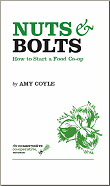‘John Lewis economy’ talk is never knowingly undersold
Written By Phillip Blond in the Financial Times
On Monday, Nick Clegg called for the UK to become “more of a John Lewis economy”. The department store has become an emblem of a new capitalism; more mutually owned businesses has been an oft-mooted ambition of all three main UK political parties. But actually making this happen will require radical action.
Both David Cameron and Mr Clegg have quoted variants of G.K. Chesterton’s phrase that we have too much capitalism and too few capitalists. Edwardian distributists argued that the problem with capitalism was that too few owned and therefore too many people were condemned to nothing but waged servility. If one wants a popular capitalism it follows that the poor need capital, yet the returns to labour have fallen steadily since 1968, bequeathing not assets but lower wages and higher debt.
The merits of wider employee ownership are clear. Over the past 18 years, employee-owned firms have outperformed FTSE All-Share firms by an average of 11 per cent a year. So it is no surprise that the John Lewis model, in which each staff member receives the same bonus as a proportion of their salary, has had such a positive effect on the firm’s profitability.
But having more firms such as John Lewis is a very difficult thing to achieve. Mr Clegg went beyond rhetoric and included policy proposals such as “a universal right to request” for workers to purchase shares in their companies. We still have yet to attain anything like mass employee share-ownership at scale. Perhaps the most beneficial scheme for ordinary staff is the share incentive plan (SIP), which has about 1m savers across 890 plans, costing the government a paltry £320m ($490m) in tax relief in 2010.
Compare this to the £28bn spent on pension tax relief, a quarter of which goes to just 300,000 people. Most employee share-option schemes are similarly regressive. To create a true ownership society, more radical approaches are needed, such as preventing the establishment of tax-incentivised employee share options for executives unless an all-employee trust is also established. But these all-employee trusts will require new legislation to attain mass popularity since many of the previous reliefs have been removed by the Treasury.
It is also far too difficult to set up or convert an existing business into a co-operative or a mutual. The last consolidated company act for mutuals came in 1965 – since then it has been amended piecemeal 17 times. Quite simply, we need a new consolidated act that modernises and simplifies the co-operative model.
Similarly, we have few worker buy-outs in the UK because our controlling company legislation in effect prohibits it. An identical problem occurs in insolvency, where we need a UK equivalent of Italy’s Marcora Law, which was set up to help fund employee purchases of otherwise insolvent companies. In Italy, up to three years of staff unemployment benefit can be capitalised to help fund the buy-out.
We also need to encourage wider ownership among other business models. Community investment tax relief (CITR) is very narrow, applying only to financial institutions in “disadvantaged communities”. It was thought that £1bn of CITR investments would be made between 2000 and 2010 but only £60m was ultimately deployed. Widened and rebranded as a “social investment tax relief”, it could help to jump-start share ownership in social enterprises.
Most importantly, however, we need a new company model – many pure mutuals find it incredibly difficult to raise finance, as the market still views this model as too complex. Circle Health, the first private healthcare operator to take over an NHS district general hospital, had to invent a new company structure in its recent attempt to fund its expansion.
Only if we encourage hybrid models, such as the low-profit limited liability company (L3C) in the US, which allows ownership by charities and investors, can mass ownership hope to reach scale. Ordinary people can understand a structure where 40 per cent of the return goes to staff and 60 per cent to investors – but we currently lack a company model that can capture this. To create a true John Lewis economy we must redefine both the existing capitalist and co-operative models, creating a new hybrid in which returns are both profitable and social.
The writer is the director of ResPublica, a public policy think-tank



